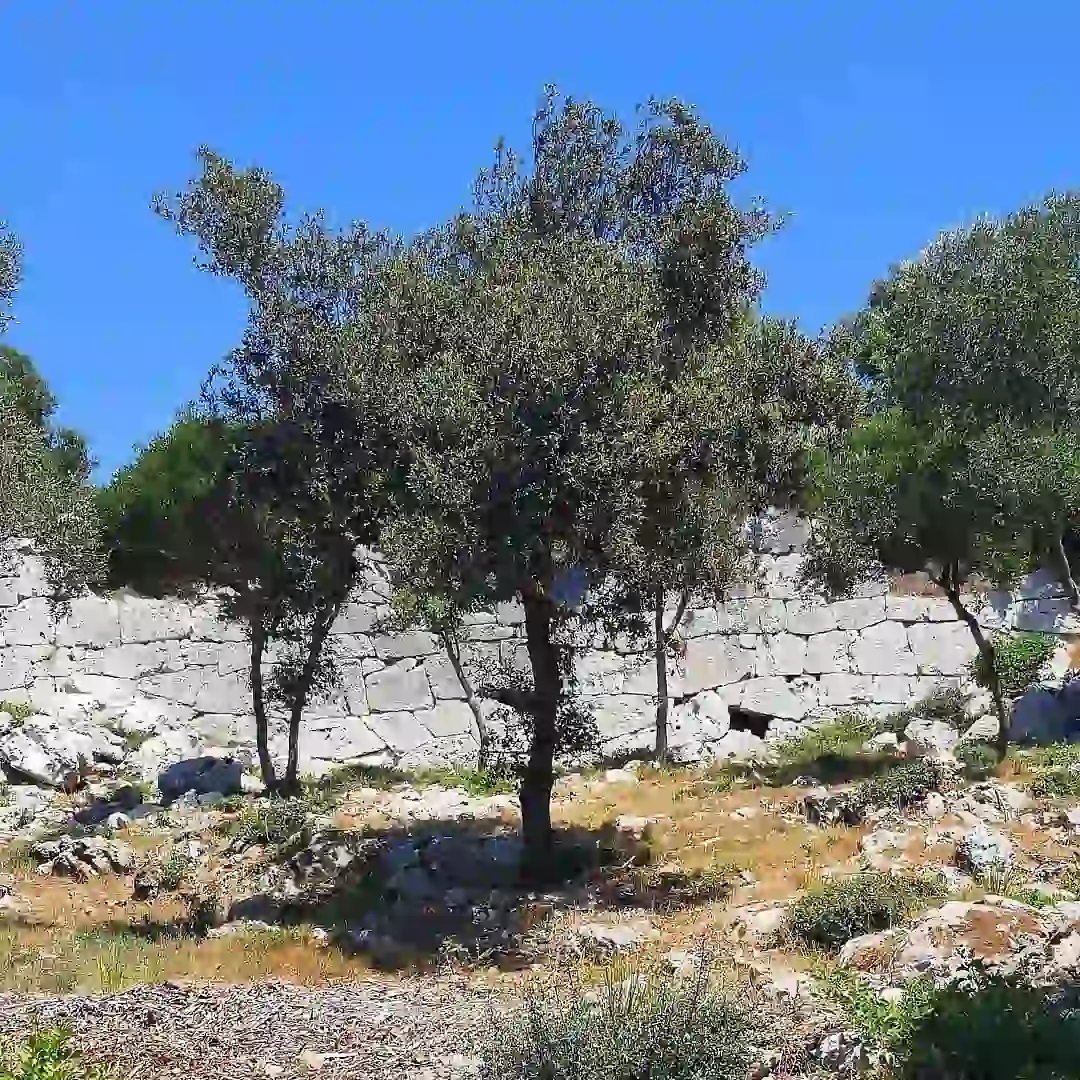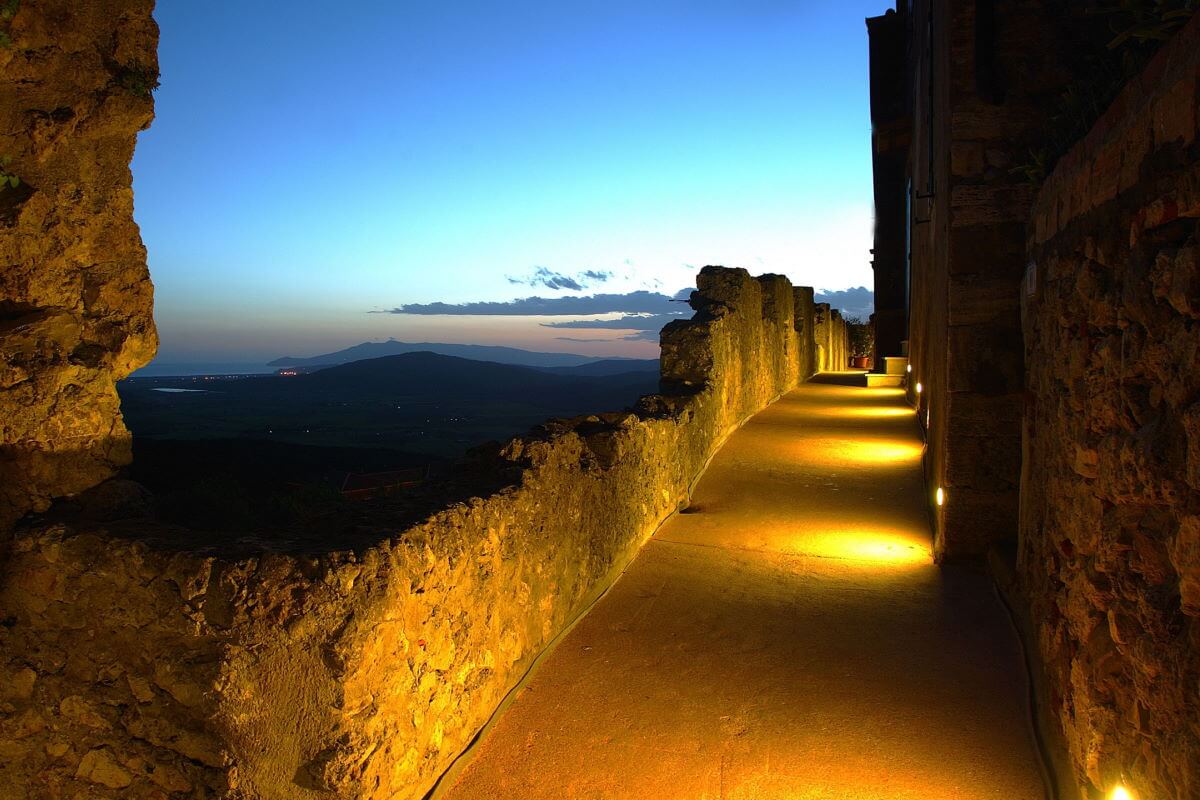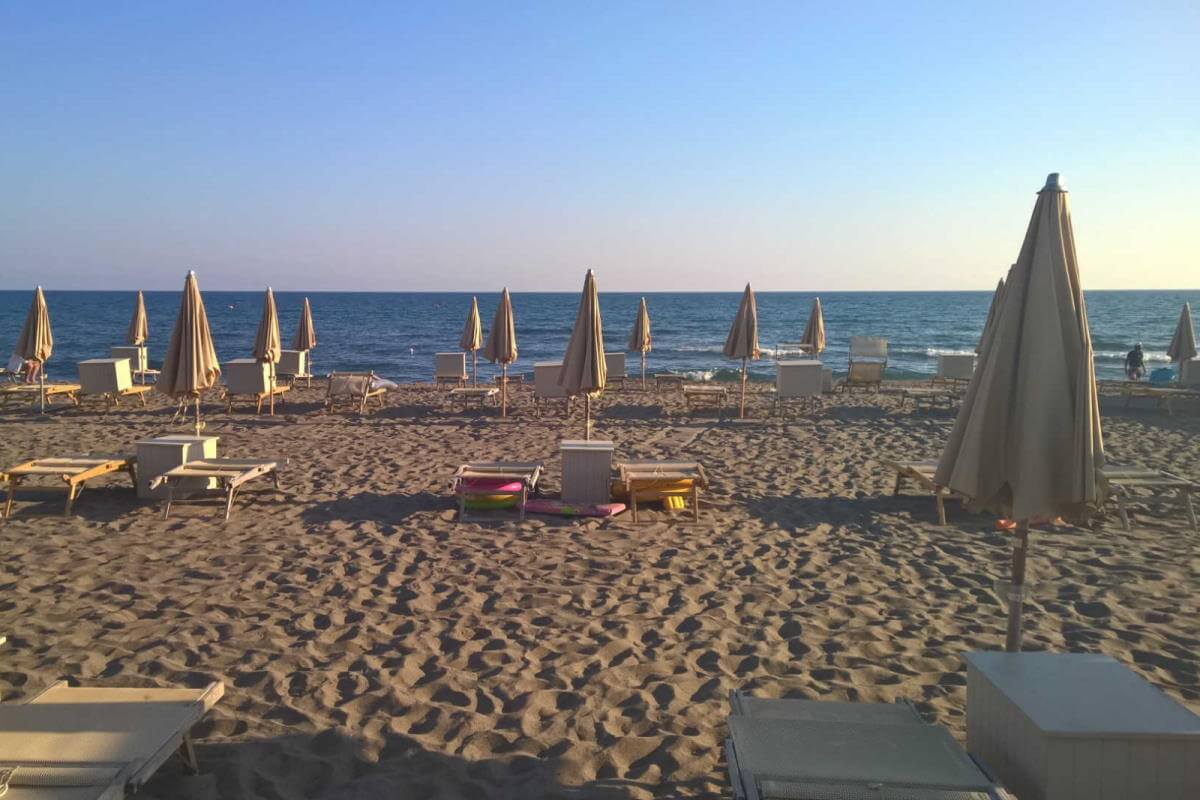On the highest point of the rocky promotory of Ansedonia, above the swanky villas that overlook the sea and the roads that wind their way around the summit, are the imposing white city walls of ancient Cosa. You can see them on Via delle Ginestre as you drive around to the entrance of the archeological site.
Cosa was settled and fortified by the Romans in 273 BC after they had defeated the Etruscans. It protected the nearby port, oversaw the coast and inland, and was linked to Rome by road. It suffered the devastation of Hannibal’s invasion in the second Punic War, and protected the large farms and great villas built on the plain towards Capalbio when the region recovered. The emperor Augustus rebuilt it after an earthquake, abandoned, revived, and abandoned again after a plague of mice and malaria, and by the 4th century AD was in ruins, with only its remarkable temples and graneries and villas left for archeologists to excavate in the 20th century.


